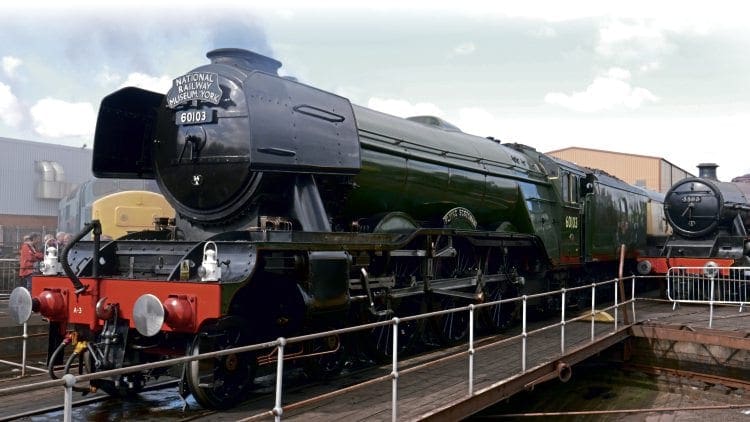Which are Britain’s top 10 steam engines? Brian Sharpe compares the history and performance of the 10 biggest currently working main line engines in roughly chronological order of the introduction of the class.

Britain’s elite working steam locomotives are those registered to operate main line trains on the Network Rail system. In recent years, there have been fewer of the smaller engines and the heavier main line railtours have been in the hands of a select few Class 7 and 8 express steam locomotives.
In addition there are a number of Class 5 and 6 4-6-0s that generally haul lighter trains, often on secondary routes such as the West Highland extension, most subject to an overall maximum of 60mph as dictated by somewhat smaller driving wheels.
Enjoy more Heritage Railway reading in the four-weekly magazine.
Click here to subscribe & save.
The system of power classification was devised by the London Midland & Scottish Railway as a development of a system first instigated by the Midland Railway. The smallest shunting engines on the LMS were classified ‘0’ and the largest Pacifics were
Class ‘7’. The Stanier 2-8-0s were as powerful as the largest Pacifics and were given the power classification ‘7F’. Engines could be classified ‘7P’ or ‘7F’ for example if they were designed for exclusively passenger or freight work, while those that were suitable for both were simply Class ‘5’ for example.
Confusion crept in to the system with the LMS Jubilee 4-6-0s, which were more powerful than a Class ‘5’ but not quite a Class ‘6’, so the LMS designated them ‘5XP’, effectively ‘51/2P’. This anomaly was removed by British Railways after Nationalisation by making Class 7s into Class 8s, Class 6s into Class 7s and 5XPs into Class 6s. The system was applied to the other BR regions but was adopted with varying degrees of enthusiasm.
Read more in Issue 222 of Heritage Railway
Advert
 Enjoy more Heritage Railway reading in the four-weekly magazine. Click here to subscribe.
Enjoy more Heritage Railway reading in the four-weekly magazine. Click here to subscribe.




